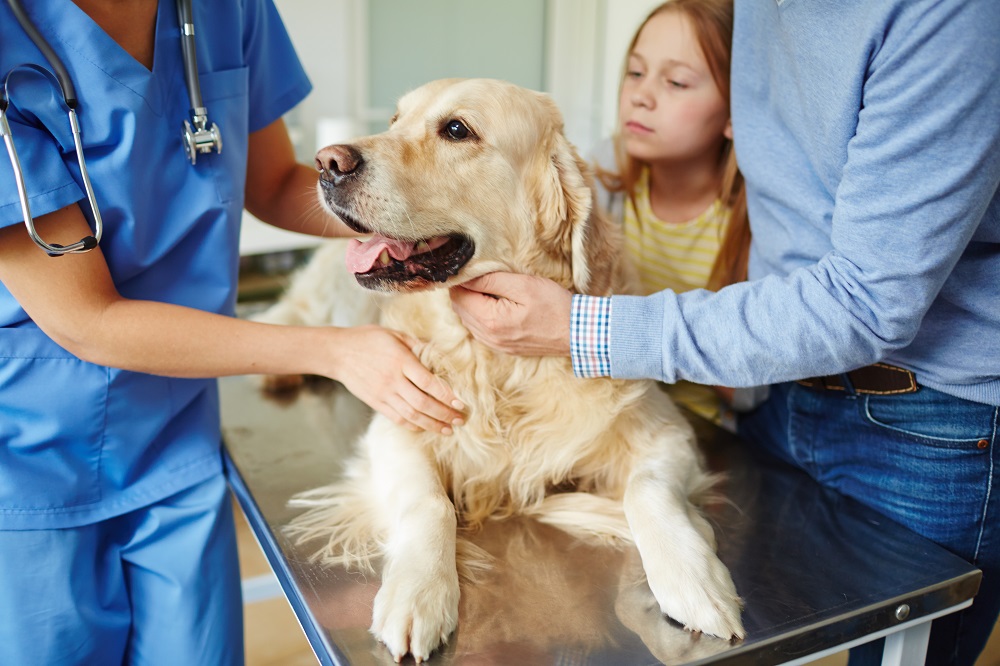Oct 26, 2020

If your pet’s primary care veterinarian has diagnosed a cranial cruciate ligament injury, a combination of early intervention, advanced surgical techniques, and post-operative rehabilitation therapy offers the best long-term outcome. Each pet’s injury is unique, and one of our veterinary surgeons will choose the surgical procedure that will most benefit your pet; in many cases, we may recommend TPLO. TPLO offers the highest long-term success rate, with almost all pets returning to near-normal function after surgery.
TPLO is major joint surgery, and excellent post-operative care is critical for successful healing and return to full function. Here is what you can expect after your pet’s TPLO surgery.
Most pets spend one night in the hospital following a TPLO procedure. Your pet will be groggy for several hours following surgery, as the anesthetic drugs are metabolized and excreted. Although post-operative complications are rare, your pet will be monitored closely during their recovery, so any issues can be addressed immediately. We also offer dedicated one-on-one anesthesia recovery, so one of our experienced veterinary staff members will stay with your pet and ensure they are completely comfortable while regaining normal function.
During recovery, your pet will also receive immediate post-operative rehabilitation by a member of our Sports Medicine and Rehabilitation team, often including a combination of Class IV laser therapy and transcutaneous electrical nerve stimulation (TENS) to reduce pain and inflammation, as well as cold compression icing to reduce pain and post-operative swelling. We may also use a variety of massage techniques and start exercises to support your pet’s recovery, in our hospital; we will also show you how to perform these exercises at home. Our care team will help your pet stand after surgery when they are ready, offering support while they walk on the affected knee for the first time.
Your pet will come home with several medications, which may include:
Administering all your pet’s medications, as directed by their veterinarian, is imperative. The combination of medications and home exercises prescribed should keep your pet comfortable throughout the recovery period—so much so, you may think pain and anti-inflammatory medications are unnecessary, and be tempted to skip them. But, the constant level of these medications in your pet’s body keeps pain and inflammation at bay, and missing a dose may cause them undue discomfort that is more difficult to treat.
You will need to monitor your pet’s incision at least twice daily for 10 to 14 days, until the incision is healed, and sutures are removed. Contact your veterinarian if you notice excessive redness, swelling, discharge, or other complications. You will be instructed to perform exercises that will improve your pet’s range of motion, and your pet will be sent home wearing an E-collar to prevent them from licking, biting, or chewing the incision, which may itch while it heals. Keeping the E-collar on at all times is critical to prevent post-operative complications, such as infections that can delay healing, and often result in additional expenses.
During the eight weeks following surgery, you must restrict your pet’s activity to controlled leash walks only, and prohibit them from high-impact activities, such as running, playing, jumping onto furniture, and climbing stairs, as excessive activity may cause complications that could interfere with proper healing. When you cannot directly supervise your pet, you should confine them to a crate or small room to minimize activity. During the first two weeks, limit leash walks to slow, controlled, five-minute bathroom breaks. Over the next six weeks, walks can be increased slowly as directed by your veterinary team, but keep your pet strictly leash-controlled.

After suture/staple removal, your pet’s surgeon will work with our Sports Medicine and Rehabilitation Department to tailor a rehabilitation plan that will help support the goal of a safe return to full function. Our sports medicine and rehabilitation specialist, Juliette Hart, MS, DVM, CCRT, CVA, DACVSMR, is one of the few board-certified veterinary sports medicine and rehabilitation specialists in the country, and will oversee your pet’s recovery. The customized rehabilitation plan may include several therapies, such as:
Eight weeks after surgery, we will take X-rays to evaluate whether bony healing of your pet’s tibia is complete. Once healing is confirmed, your pet can gradually resume normal activity. Life-long healthy habits, such as weight management and a prescription joint diet, will be critical to minimize arthritis development and maintain normal function.
If your pet has been diagnosed with cranial cruciate ligament disease, we will partner with your primary care veterinarian to ensure they are given the best chance for a successful recovery. Contact us to schedule a surgical consult, or with questions or concerns.